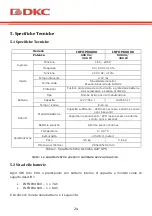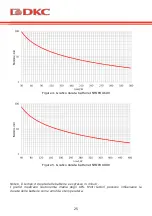
36
4.2 Connection of the UPS to the mains and the load
4.
Plug the UPS power cable into a mains socket. Before use, it is recommended to
charge the battery for 10 hours. The battery automatically recharges while the UPS is
connected to the mains.
5.
Connect consumers to the UPS output.
6.
Phone / Modem / Fax Connection (RJ-11 / RJ-45 devices only)
The telephone pair should be connected to the “in” connector on the rear panel of the
device. A cable form the phone / modem / fax should be connected to the “out”
connector.
4. Connecting the communication cable (only for models with USB / RS232)
It allows remote monitoring of the UPS. Connect the device to the computer with the
cable. Using the software, it’s possible to turn on / off the UPS, as well as monitor its
status from a computer.
4.3 Turn on and off the UPS
5.
Press the power button and make sure there are no alarms.
6.
Turn on connected user devices.
7.
In the event of a mains failure or a power surge, the UPS will switch to battery mode,
the red LED will light up and an alarm sound will be given. It is recommended to
disconnect non-priority devices to extend battery life. When the battery is completely
discharged, the UPS turns off, and when the mains voltage is restored, it automatically
starts again.
8.
Press the power button to turn the UPS off.
ATTENTION!
In the case of mains failure, the user can turn on the UPS to supply the
load (the “cold start” function).
Laser printers and scanners, as well as non-computer equipment (medical equipment,
microwave ovens, vacuum cleaners) should not be connected to the output sockets with
redundancy, because it can lead to overload due to high value of starting current.
Summary of Contents for INFOPDU600
Page 2: ......
Page 5: ...3 Русский язык ...
Page 6: ...4 ...
Page 18: ...17 Lingua Italiana ...
Page 19: ...18 ...
Page 30: ...29 ...
Page 31: ...30 English language ...
Page 32: ...31 ...
Page 43: ......
Page 44: ......








































